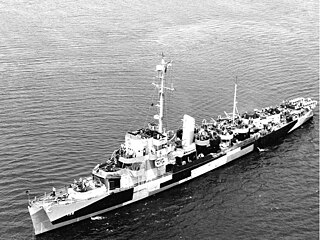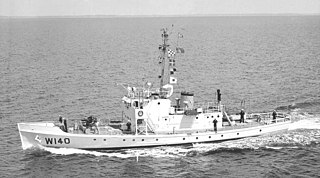
USS Mackerel (SS-204), the lead ship of her class of submarines, was the first ship of the United States Navy named for the mackerel. Mackerel and her near-sister Marlin were prototype small submarines which the Navy was exploring to replace the aging S-class submarines.

USS Flier (SS-250) was a Gato-class submarine, was the only ship of the United States Navy to be named for the flier.

USS Jacob Jones (DD-130), named for Commodore Jacob Jones USN (1768–1850), was a Wickes-class destroyer. She was sunk by a German submarine in 1942 during World War II.

USS Dickerson (DD-157) was a Wickes-class destroyer in the United States Navy, and was converted to a high-speed transport at Charleston, South Carolina and designated APD-21 in 1943. She was named for Mahlon Dickerson (1770–1853), Secretary of the Navy from 1834 to 1838.

USS Roper (DD-147) was a Wickes-class destroyer in the United States Navy, later converted to a high-speed transport and redesignated APD-20.

USS Du Pont (DD–152) was a Wickes-class destroyer in the United States Navy during World War II, later reclassified as AG-80. She was the second ship named for Rear Admiral Samuel Francis Du Pont.

USS Ellis (DD–154) was a Wickes-class destroyer in the United States Navy during World War II. She was reclassified AG-115 on 30 June 1945. She was named for Chief Yeoman George Henry Ellis.

USS Plymouth (PG-57), a patrol gunboat, was the fourth ship of the United States Navy to be named for Plymouth, Massachusetts, a town founded by the Pilgrims in 1620 on Plymouth Bay, about 35 miles southeast of Boston.

The first USS Patterson (DD-36) was a modified Paulding-class destroyer in the United States Navy during World War I and later in the United States Coast Guard, designated as CG-16. She was named for Daniel Patterson.
The second USS Sapphire (PYc-2) was a patrol boat in the United States Navy.

USS Hunt (DD-194) was a Clemson-class destroyer in the United States Navy following World War I. She also served in the United States Coast Guard, as USCGD Hunt (CG-18). She was later transferred to the Royal Navy as HMS Broadway (H90).
USS Dallas (DD-199) was a Clemson-class destroyer in the United States Navy during World War II. She was the second ship named for Captain Alexander J. Dallas, and was later renamed Alexander Dallas.

USS Peterson (DE–152) was an Edsall class destroyer escort, the first United States Navy ship so named. This ship was named for Chief Water Tender Oscar V. Peterson (1899–1942), who was awarded the Medal of Honor posthumously for his actions during the Battle of the Coral Sea.

The third USS Decatur (DD-341) was a Clemson-class destroyer in the United States Navy following World War I. She was named for Stephen Decatur.

USS Isabel (SP-521), later PY-10, was a yacht in commission in the United States Navy as a destroyer from 1917 to 1920 and as a patrol yacht from 1921 to 1946.

USS O'Toole (DE-527) was an Evarts-class destroyer escort of the United States Navy during World War II. She served in the North Atlantic ocean protecting convoys and other ships from German U-boats and aircraft. She also performed escort and anti-submarine operations before returning home at the end of the conflict.

The first USS Cythera (SP-575/PY-26) was a United States Navy patrol vessel that saw service in the Atlantic Ocean during both World War I and World War II.

USS Valiant (PYc-51), originally USS PC-509, was a United States Navy patrol vessel in commission from 1941 to 1944.

USS Turquoise (PY-18), was a yacht in commission in the United States Navy as a Patrol Yacht from 1940 to 1943.

USCGC Legare (WSC-144) was cutter that served in the United States Coast Guard for almost forty-one years.


















